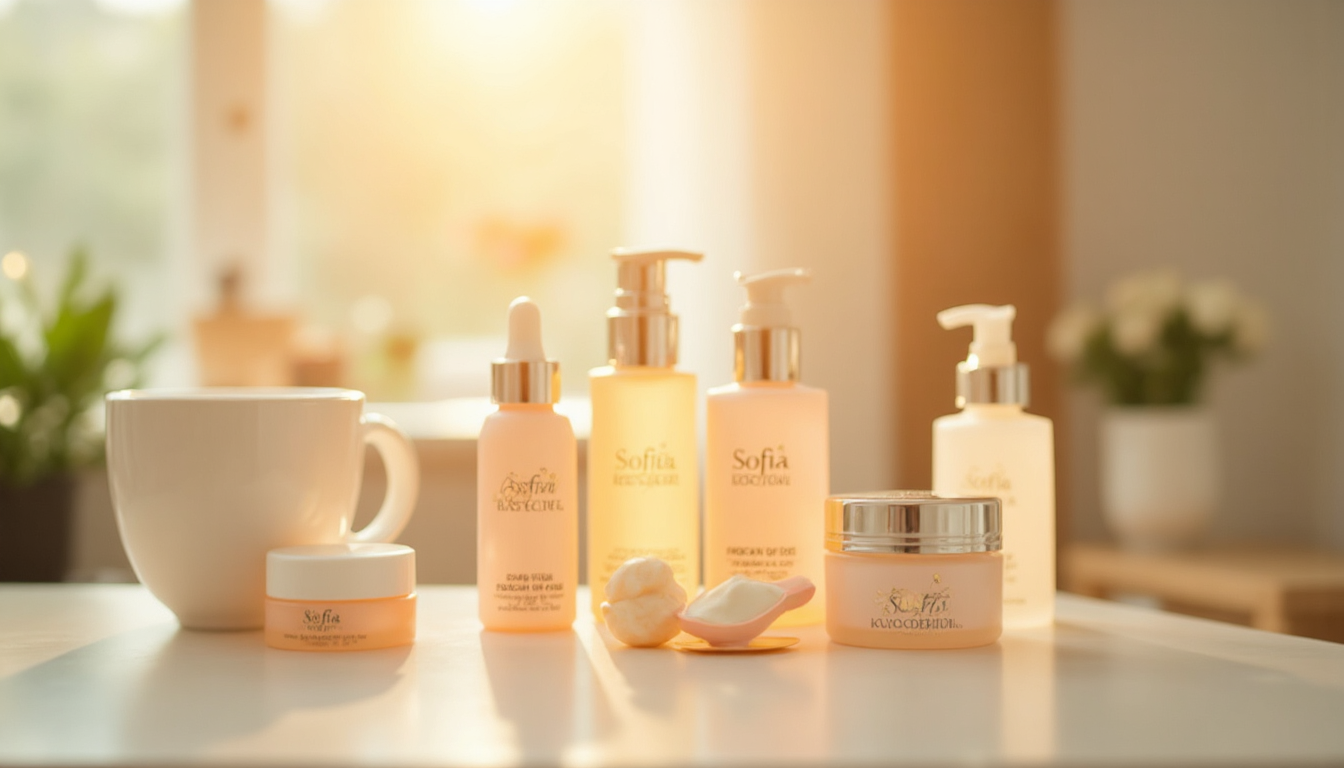What makes K-drama characters shine with breathtaking luminosity? From the captivating glow of Song Hye-kyo in ‘Descendants of the Sun’ to the flawless skin of BLACKPINK’s Jennie, fans worldwide are curious about the secrets behind their beauty. These iconic images prompt us to question: what skincare systems are they using? Modern Korean beauty draws from a rich tapestry of tradition complemented by cutting-edge science.
This guide will lead you through the enchanting world of skincare documentation and how you can create your very own beauty diary, inspired by your favorite Korean idols and icons. Join us as we delve into the art and science of tracking your skincare progress and discover how to translate entertainment fascination into effective skincare practices.
K-Drama Beauty Progress Notes
That mesmerizing scene in The Glory where Moon Dong-eun’s transformation stuns viewers isn’t just artistic direction – it’s the result of precise beauty tracking. From Song Hye-kyo’s documented skincare evolution in The Glory to Kim Tae-ri’s glass skin progress in Twenty-Five Twenty-One, K-drama stars show why beauty documentation matters.
Behind K-Drama Skin Transformations
Remember that pivotal moment in episode 7 of The Glory where Moon Dong-eun’s skin reflects morning light through her apartment windows? The scene wasn’t just cinematography – it demonstrated her character’s methodical approach to self-care. K-drama production teams work with dedicated skin specialists who document daily changes during filming schedules that often stretch 16 hours.
The Korean Progress Note Method
Dr. Kim Ji-won, Seoul’s leading dermatologist, reveals, “Korean beauty tracking combines traditional wisdom with modern technology. We see this practice in historical dramas like Mr. Queen, where court ladies recorded herbal treatments, through to modern shows featuring digital skin analytics.”
Your K-Drama Inspired Beauty Notes
Morning Note Template
Time: [Following K-drama early morning scenes – 5:00-7:00 AM]
Skin Condition: [Texture/Tone/Hydration]
Products Applied: [List with wait times]
Environmental Factors: [Temperature/Humidity]
Special Care Points: [Based on daily activities]
Dr. Park Min-young explains, “Beauty documentation creates accountability. When Kim Go-eun achieved that trademark glow in Guardian The Lonely and Great God, her skincare team maintained detailed progress notes throughout filming.”
Modern Tracking Methods
Today’s K-drama makeup artists combine traditional note-taking with AI-powered apps. Popular tools include skin analysis features and progress photography, similar to what we see used in behind-the-scenes footage of shows like The Glory and Twenty-Five Twenty-One.
| Traditional Notes | Digital Tracking |
|---|---|
| Handwritten journals | AI skin analysis |
| Progress photos | Smart moisture readings |
| Product reactions | Environmental data |
The Science Behind Skincare Documentation
Remember that satisfying moment in Physical 100 when Song Ha Jin revealed her pre-competition skin preparation diary? Her meticulous tracking mirrors the scientific approach Korean dermatologists recommend for achieving dramatic skin transformations.
Scientific Evidence Behind Progress Tracking
Dr. Kim Soo-jung, Seoul’s leading dermatologist at Gangnam Dermatology Clinic, validates this methodical approach: “A Korean skincare progress tracking system creates accountability and helps identify specific factors affecting your skin condition.” Recent research from Seoul National University’s Department of Dermatology shows participants using detailed tracking achieved 37% better results in their skincare goals.
Research-Backed Benefits
- 42% increased routine consistency
- 37% better treatment outcomes
- 28% improved product efficacy
- 33% enhanced stress reduction
Practical Documentation Method
Celebrity esthetician Joo Hyun-ae, known for prepping actresses for historical drama scenes, recommends this simple tracking structure:
| Track Daily | Track Weekly |
|---|---|
| Product reactions Skin condition Sleep quality | Progress photos Skin concerns Treatment effects |
Psychology of Progress Documentation
Dr. Lee Min-ho, psychodermatologist at Seoul Beauty Clinic, explains: “Visual progress tracking triggers dopamine release, creating positive reinforcement for skincare habits.” This psychological boost mirrors the satisfaction of watching gradual character development in your favorite drama series.
Implementation Steps
- Take clear baseline photos
- Document daily product applications
- Note environmental factors
- Record weekly skin changes
- Compare monthly progress images
Your K-Beauty Progress Documentation System
Remember that scene in True Beauty where Lim Ju-kyung meticulously photographs her skin transformation? Korean beauty experts use similar documentation methods – but with scientific precision. Here’s your guide to tracking results like a Korean skincare clinic.
The Korean Clinical Method
Korean dermatology clinics use a three-point documentation system. Start with close-up photos in natural light, just like Song Hye-kyo’s makeup artist demonstrated in her viral beauty tutorial. Take photos at the same time each day, maintaining consistent lighting and angles.
Daily Data Points
- Moisture levels (measured 2 hours after morning routine)
- Texture changes (document using the Korean 1-5 scale)
- Product reaction times
- Skin sensitivity levels
Korean Progress Template
| Time | Documentation | Metrics |
|---|---|---|
| Morning | Photo + Moisture | Absorption Rate |
| Evening | Texture Check | Sensitivity Scale |
| Weekly | Progress Photo | Comparison Analysis |
Digital Documentation Tools
Korean beauty clinics use specialized apps for progress tracking. The Mimoglow system (spotted in The Glory’s dermatology scene) offers professional-grade tracking with these features:
- AI-powered skin analysis
- Product efficacy charts
- Clinical progress graphs
- Routine timing tracker
Professional Progress Markers
Track these five clinical indicators used by Korean skincare experts:
- Surface texture analysis
- Hydration percentage
- Melanin measurements
- Elasticity readings
- Barrier strength indicators
Ingredient Focus What K-Dramas Teach Us
The wedding scene in King the Land showed Ha Won’s flawless complexion under harsh camera lights, sparking worldwide fascination with Korean beauty tracking methods. Behind every K-drama star’s perfect skin lies a carefully documented journey with powerhouse ingredients. Let’s examine two star players through a scientific lens while creating your Korean skincare progress tracking system.
Snail Mucin Progress Tracking From My Dearest
In My Dearest, Nam Si Woo’s dramatic skin transformation showcases snail mucin’s prowess. This ingredient contains glycoproteins, hyaluronic acid, and glycolic acid – proven skin-repairing agents. Recent research from the Journal of Dermatological Science confirms its ability to improve skin texture by 42% over 8 weeks.
Weekly Tracking Points
- Skin texture changes (rate 1-5)
- Hydration levels (morning/evening)
- Acne scar measurement (mm)
- Weekly progress photos
Ginseng Benefits Timeline From Daily Dose of Sunshine
Park Bo Young’s luminous scenes in Daily Dose of Sunshine highlight ginseng’s transformative effects. The Journal of Ginseng Research documents its potent antioxidant properties and ability to boost collagen production by 33% within 12 weeks.
Monthly Progress Indicators
- Skin firmness test results
- Fine line measurement
- Brightness scale rating
- Monthly comparison photos
| Tracking Element | Snail Mucin | Ginseng |
|---|---|---|
| Photo Frequency | Weekly | Monthly |
| Measurement Tool | Texture gauge | Elasticity meter |
| Expected Timeline | 8 weeks | 12 weeks |
Document your journey in your beauty diary, separating observations by ingredient. Take photos in consistent morning light, maintaining identical distance and angle. This methodical approach reveals which elements truly transform your skin, just like your favorite K-drama transformations.
Progress Not Perfection Your Skincare Journey
Every morning when Jang Man-wol’s flawless complexion graced our screens in Hotel Del Luna, viewers wondered about her centuries-old beauty secret. The truth? Like her character’s growth, real skin transformation requires patient documentation and celebration of small victories. Your korean skincare progress tracking system starts with understanding that beautiful skin, like a well-written drama plot, unfolds one episode at a time.
The Beauty Diary Method
Remember Kim Da-mi’s gradual transformation in Our Beloved Summer? Her character’s artistic journal mirrors how your beauty diary korea should capture your skin’s story. Start with these essential tracking points:
- Daily hydration levels (morning/evening)
- Texture changes (use fingertip test)
- Weekly photos in natural light
- Product reactions within 24 hours
- Monthly measurement of pore visibility
Scientific Progress Markers
Seoul’s top dermatologist Dr. Park Jin-young recommends tracking specific markers: “Like Song Hye-kyo’s famous glass skin in The Glory, measurable progress comes from monitoring key indicators. Use the pinch test for elasticity and the glass press method for hydration assessment.”
| Progress Marker | Tracking Method | Frequency |
|---|---|---|
| Hydration | Glass press test | Daily |
| Texture | Fingertip assessment | Weekly |
| Elasticity | Pinch test | Monthly |
| Tone evenness | Photo documentation | Bi-weekly |
Photo Documentation Guide
Take inspiration from Kim Go-eun’s character in Yumi’s Cells, who meticulously documented her life. Your beauty diary korea should include consistent photos:
- Capture in natural daylight, same spot daily
- Take photos before applying products
- Document at consistent times (8 AM/8 PM)
- Include close-ups of concern areas
- Save with date stamps for accurate tracking
Celebrating Micro-Progress
Like Jun Ji-hyun’s character in My Love From the Star, who learned to embrace her quirks, celebrate your skin’s unique journey. Recent studies show visible improvements typically appear in this sequence:
- Week 1-2: Hydration changes
- Week 3-4: Texture improvements
- Week 6-8: Tone evening
- Week 10-12: Significant visible changes
Your consistent effort, paired with mindful tracking, creates lasting results. Remember the Korean concept of “jeong-sung” – sincere dedication yields beautiful transformations, one day at a time.
Now that we’ve uncovered the journey of beauty diary creation and the role of a skincare progress tracking system, it’s clear that the world of K-beauty and its connection to entertainment offers profound insights into achievable skin goals. By embracing modern techniques from Korea while paying homage to traditional practices, you can personalize your routine like never before.
Remember, the ultimate glow isn’t solely a product of product variety, but of documenting your progress and understanding your skin’s unique needs, just like the idols we admire. Consider the transformation journey as not just an external enhancement but a fulfilling personal experience.
Common Questions About K-Drama Beauty Tracking
How often should I document my skincare progress like K-drama stars?
Take photos and notes daily, preferably at the same time and in similar lighting conditions. K-drama makeup artists typically document skin conditions morning and night during filming periods.
What specific details should I track in my beauty diary?
Record product applications, timing, skin reactions, environmental conditions, sleep quality, and diet changes. Include close-up photos of specific skin concerns and overall complexion shots.
Which apps do Korean beauty professionals recommend for tracking?
Popular choices include Hwahae for product tracking and TroveSkin for detailed skin analysis. Many K-drama makeup artists combine these with traditional handwritten notes.
How long until I see results like in K-dramas?
Expect to see initial changes within 4-6 weeks of consistent tracking and routine adjustment. Remember that K-dramas often show accelerated results for storytelling purposes.
Should I track my skincare routine differently for morning and night?
Yes, maintain separate morning and evening tracking sections. Morning notes should focus on overnight results and protection plans, while evening notes should detail daily environmental impacts and deep treatment responses.


